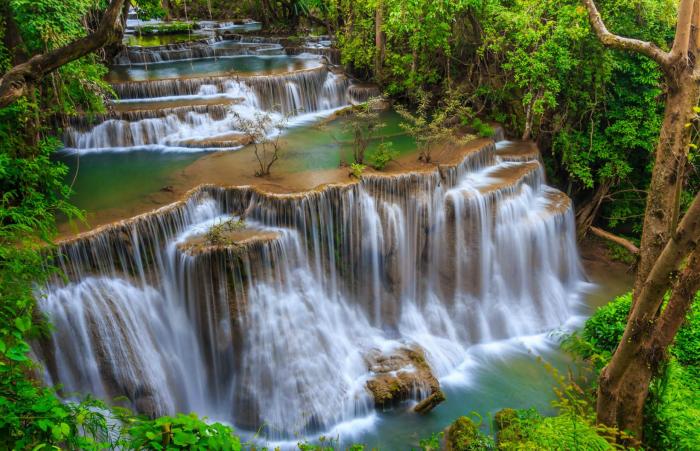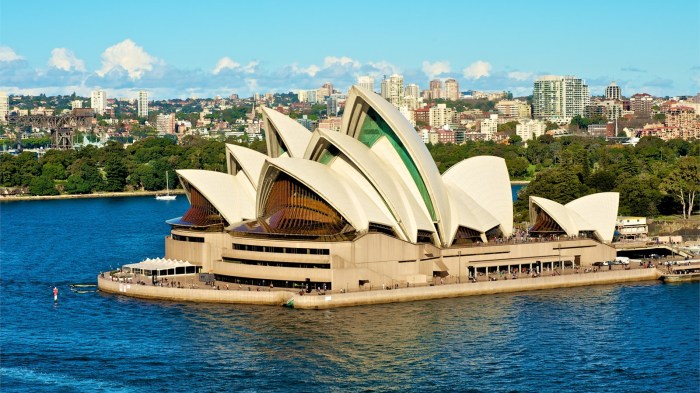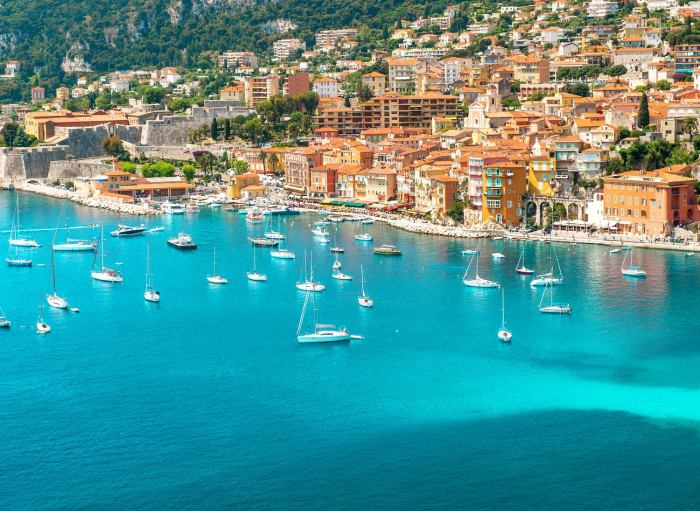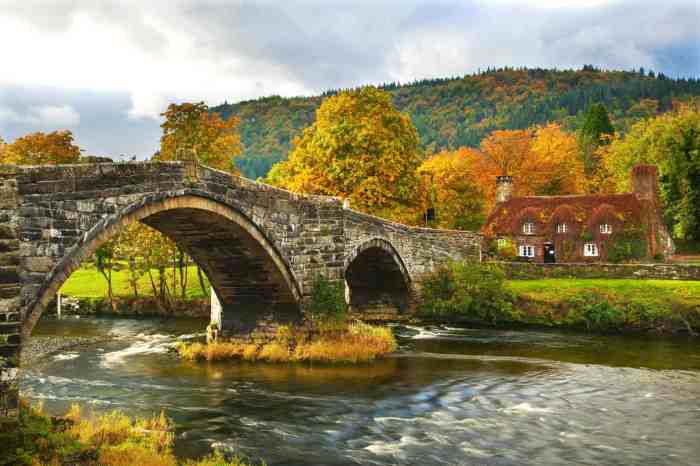Top 10 Places To Visit In Spain
Top 10 Places To Visit In Spain – from the vibrant streets of Barcelona to the serene beaches of Mallorca, Spain is a country brimming with history, culture, and breathtaking beauty. Whether you’re an art enthusiast, a history buff, a foodie, or simply seeking an unforgettable adventure, Spain has something to offer everyone.
From the iconic architecture of Antoni Gaudí in Barcelona to the Moorish wonders of the Alhambra in Granada, Spain’s diverse landscapes and rich heritage promise an unforgettable journey. This list will guide you through the most captivating destinations, highlighting the unique charm of each city and offering a glimpse into the soul of Spain.
Barcelona

Barcelona, a vibrant metropolis on Spain’s Mediterranean coast, is a city that seamlessly blends history, culture, and modern life. From its iconic architecture to its lively nightlife, Barcelona offers a captivating experience for every traveler.
Antoni Gaudí’s Architectural Masterpieces
Antoni Gaudí, a renowned Catalan architect, left an indelible mark on Barcelona’s cityscape. His whimsical and organic designs are a testament to his artistic genius and have become synonymous with the city.
- Sagrada Familia:This unfinished basilica is Gaudí’s most famous work. Its intricate towers, stained glass windows, and soaring arches are a breathtaking sight. Construction began in 1882 and is expected to be completed in 2026.
- Park Güell:This public park, designed by Gaudí, is a whimsical wonderland of colorful mosaics, serpentine benches, and whimsical structures. The park’s mosaic-covered lizard, known as the “Salamander,” is a popular photo opportunity.
- Casa Batlló:This modernist masterpiece is known for its undulating facade, inspired by the bones of a dragon. The interior features colorful stained glass windows, intricate mosaics, and a rooftop terrace with stunning views of the city.
Barcelona’s Art Scene
Barcelona is a city with a rich artistic heritage, boasting numerous museums and galleries that showcase a wide range of styles and periods.
- Picasso Museum:This museum houses a comprehensive collection of Picasso’s works, spanning his entire career. The museum is located in the Gothic Quarter, a historic district with narrow streets and medieval buildings.
- MACBA (Museu d’Art Contemporani de Barcelona):This museum is dedicated to contemporary art and features works by renowned artists from around the world. The museum’s architecture, designed by Richard Meier, is a striking example of modernism.
Barcelona’s Nightlife and Culinary Scene
Barcelona is known for its vibrant nightlife, with a wide range of bars, clubs, and live music venues. The city’s culinary scene is equally impressive, with a variety of restaurants serving traditional Catalan cuisine and international fare.
Madrid
Madrid, the vibrant capital of Spain, pulsates with a rich history, captivating culture, and an energetic spirit that captivates visitors from around the world. From its majestic palaces to its world-renowned museums, Madrid offers a captivating blend of grandeur and modernity.
The Royal Palace
The Royal Palace of Madrid, the official residence of the Spanish royal family, stands as a testament to Spain’s regal past. Built in the 18th century, this grand palace boasts a stunning architectural design, intricate interiors, and an impressive collection of art and historical artifacts.
The palace’s grand halls, opulent chambers, and breathtaking gardens provide a glimpse into the lives of Spanish monarchs throughout the centuries.
The Prado Museum
The Prado Museum, one of the world’s finest art museums, houses a treasure trove of masterpieces by Spanish masters. Its collection encompasses works by renowned artists such as Goya, Velázquez, and El Greco, showcasing the evolution of Spanish art from the 12th to the 19th centuries.
The museum’s iconic works, including Goya’s “The Third of May 1808” and Velázquez’s “Las Meninas,” are celebrated for their artistic brilliance and historical significance.
The Gran Vía
The Gran Vía, Madrid’s bustling main shopping street, is a vibrant hub of activity. Its grand theaters, stylish boutiques, and lively restaurants create a dynamic atmosphere that draws locals and tourists alike. The street’s iconic architecture, including the Metropolis building and the Telefónica building, adds to its architectural charm.
The Gran Vía is a perfect destination for indulging in retail therapy, enjoying a delicious meal, or simply soaking up the energy of Madrid’s vibrant city life.
Seville

Seville, the capital of Andalusia, is a city that pulsates with a captivating blend of history, culture, and vibrant energy. Its rich heritage, stunning architecture, and lively atmosphere make it an unforgettable destination.
The Passion of Flamenco
Flamenco, a UNESCO-recognized intangible cultural heritage, is deeply intertwined with Seville’s identity. The city is considered the birthplace of this passionate art form, which expresses a range of emotions through song, dance, and guitar playing. Flamenco performances in Seville are a captivating spectacle, showcasing the raw energy and expressive power of this traditional art.
From intimate tablaos to grand theaters, the city offers numerous opportunities to experience the magic of flamenco.
Valencia
Valencia, Spain’s third-largest city, is a dynamic blend of ancient history, modern innovation, and Mediterranean charm. It’s a place where you can explore the futuristic City of Arts and Sciences, relax on pristine beaches, and indulge in the city’s vibrant culinary scene.
The City of Arts and Sciences, Top 10 Places To Visit In Spain
Valencia’s City of Arts and Sciences is a stunning architectural complex designed by renowned architect Santiago Calatrava. It’s a masterpiece of modern architecture, with buildings that resemble giant, futuristic structures. The complex consists of several buildings, each with its own unique design and purpose:
- The L’Hemisfèric: This building, resembling a giant eye, houses a planetarium, an IMAX cinema, and a laserium.
- The Museu de les Ciències Príncipe Felipe: This museum, shaped like a whale skeleton, explores science and technology in an interactive and engaging way.
- The Palau de les Arts Reina Sofía: This stunning opera house and performing arts center is known for its innovative design and world-class performances.
- The L’Àgora: This open-air space, resembling a giant tent, is used for events, exhibitions, and concerts.
- The Oceanogràfic: This aquarium, the largest in Europe, features a variety of marine life from around the world.
Beaches
Valencia is blessed with a long stretch of beautiful beaches along the Mediterranean coast. The city’s beaches are known for their fine sand, clear waters, and vibrant atmosphere. Popular beaches include:
- Playa de la Malvarrosa: This is the most popular beach in Valencia, known for its lively atmosphere, water sports, and beachside restaurants.
- Playa de las Arenas: This beach, located just south of the Malvarrosa, is a bit quieter and more family-friendly.
- Playa de El Saler: This beach, located just south of the city, is a popular spot for surfing and other water sports.
Cuisine
Valencia is a culinary paradise, with a rich gastronomic tradition that’s influenced by the region’s Mediterranean climate and fertile land. The city is famous for its paella, a rice dish that’s cooked in a large pan and traditionally includes seafood, chicken, and vegetables.
- Traditional Paella: Valencia’s paella is known for its simplicity and its use of high-quality ingredients. The most authentic version of paella is made with rabbit, chicken, snails, and beans.
- Food Markets: Valencia’s food markets are a feast for the senses, with a wide variety of fresh produce, seafood, meats, and cheeses. The Mercado Central, located in the heart of the city, is a must-visit for any foodie.
Granada
Granada, a city nestled in the foothills of the Sierra Nevada mountains, is a captivating blend of history, culture, and breathtaking scenery. This Andalusian gem offers a glimpse into Spain’s rich Moorish past and its enduring legacy. With its iconic Alhambra Palace, vibrant Albaicin neighborhood, and tranquil Generalife Gardens, Granada is a must-visit destination for any traveler seeking a unique and unforgettable experience.
The Alhambra: A Moorish Masterpiece
The Alhambra, a UNESCO World Heritage Site, stands as a testament to the grandeur and artistry of the Moorish civilization. This magnificent palace complex, built in the 13th and 14th centuries, was once the seat of the Nasrid dynasty, the last Muslim rulers of Spain.
Its intricate architecture, adorned with delicate mosaics, stunning arches, and ornate courtyards, is a mesmerizing fusion of Islamic and Western influences. The Alhambra’s most notable features include:
- The Nasrid Palaces: These palaces, including the Palace of the Lions, the Court of the Myrtles, and the Hall of the Ambassadors, showcase the epitome of Moorish artistry. The delicate stuccowork, intricate tile patterns, and serene courtyards create a truly awe-inspiring experience.
- The Generalife Gardens: These beautiful gardens, located on a hillside overlooking the Alhambra, offer a tranquil escape from the bustling city. The Generalife’s lush greenery, cascading fountains, and panoramic views of Granada create a serene and romantic atmosphere.
- The Alcazaba: This ancient fortress, built in the 11th century, served as a defensive stronghold for the city. Its towering walls and strategic location offer breathtaking views of Granada and the surrounding mountains.
The Generalife Gardens: A Tranquil Oasis
The Generalife Gardens, a UNESCO World Heritage Site, are a serene oasis nestled within the Alhambra complex. These gardens, originally designed as a summer retreat for the Nasrid rulers, offer a tranquil escape from the bustling city. The Generalife’s lush greenery, cascading fountains, and panoramic views of Granada create a serene and romantic atmosphere.
Visitors can stroll through the gardens’ winding paths, admire the vibrant flowers, and relax by the tranquil fountains. The Generalife Gardens are a perfect place to unwind and appreciate the beauty of nature, offering a welcome respite from the city’s vibrant energy.
The Albaicin: A Historic Neighborhood
The Albaicin, a UNESCO World Heritage Site, is a charming and historic neighborhood nestled at the foot of the Alhambra. Known for its narrow, winding streets, whitewashed houses, and Moorish architecture, the Albaicin is a captivating blend of history and culture.
The neighborhood’s vibrant atmosphere is further enhanced by its numerous cafes, restaurants, and shops. Visitors can explore the Albaicin’s maze-like streets, discover hidden courtyards, and enjoy panoramic views of the city from the neighborhood’s hilltop viewpoints. The Albaicin is a perfect place to experience the authentic spirit of Granada and its rich Moorish heritage.
Cordoba
Cordoba, a city in Andalusia, Spain, boasts a rich history and a unique blend of cultures. Its most iconic landmark, the Mezquita, a former mosque now a cathedral, is a testament to the city’s diverse past. Cordoba’s vibrant culinary scene, with its traditional tapas and local wines, further enhances the city’s charm.
The Mezquita’s Historical Significance
The Mezquita, built in the 8th century, is a remarkable example of Islamic architecture. The mosque’s vast prayer hall, with its intricate arches and columns, is a sight to behold. In the 13th century, the mosque was converted into a cathedral, resulting in a unique fusion of Islamic and Christian influences.
The cathedral’s central nave, with its soaring Gothic arches, stands as a testament to Christian architectural prowess. The Mezquita’s architecture reflects the city’s diverse history and its transition from a Muslim to a Christian center.
Cordoba’s Rich Cultural Heritage
Cordoba’s Jewish quarter, known as the Juderia, is a fascinating glimpse into the city’s past. The narrow, winding streets are lined with traditional houses, synagogues, and shops. The Juderia’s vibrant atmosphere and its well-preserved architecture provide a glimpse into the city’s Jewish heritage.
Spain is all about tapas, flamenco, and breathtaking architecture, but if you’re looking for a change of pace, consider heading north to Slovakia. You can find a ton of stunning castles and charming villages, like those on the Top 10 Places To Visit In Slovakia list.
Then, once you’ve had your fill of Slovakian charm, come back to Spain and get ready to soak up the sun on the beaches of Barcelona or Valencia.
Cordoba also boasts Roman ruins, including the Roman bridge and the Roman temple. These remnants of Cordoba’s Roman past provide a glimpse into the city’s ancient origins.
Cordoba’s Culinary Delights
Cordoba’s culinary scene is a vibrant mix of traditional Spanish and Andalusian flavors. The city’s famous tapas, small dishes served in bars and restaurants, offer a taste of the region’s culinary heritage. Some popular tapas in Cordoba include salmorejo, a cold tomato soup, and flamenquín, a breaded pork and ham roll.
Cordoba’s local wines, particularly those from the Montilla-Moriles region, complement the city’s tapas perfectly. These wines, known for their dry and slightly bitter flavors, are a delightful accompaniment to the region’s cuisine.
Toledo: Top 10 Places To Visit In Spain
Toledo, a city steeped in history and culture, is a must-visit destination in Spain. Situated on a hilltop overlooking the Tagus River, Toledo has been a crossroads of civilizations for centuries, serving as a capital city for the Roman Empire, the Visigothic Kingdom, and the Islamic Caliphate.
Its rich heritage is evident in its stunning architecture, art, and vibrant culinary scene.
Spain’s got some killer spots, like the Alhambra in Granada or the Sagrada Familia in Barcelona, but if you’re looking for a change of pace, you might want to check out Top 10 Places To Visit In Turkey. Then, once you’ve soaked up the Turkish vibes, you can head back to Spain and hit up the beaches of the Costa Brava – they’re pretty epic, too!
The Historical Significance of Toledo
Toledo’s historical significance is undeniable. It has been recognized by UNESCO as a World Heritage Site, and it is a city that has been shaped by a diverse range of influences. Its strategic location, situated on a plateau overlooking the Tagus River, made it a natural stronghold for various empires.
Toledo was once a center of learning and culture, attracting scholars and artists from across Europe. The city was a prominent center for the translation of Arabic texts into Latin during the Middle Ages, which played a crucial role in the transmission of knowledge to the West.
Trying to figure out the best spots to hit up in Spain? A Top 10 list is a great place to start, but if you’re feeling adventurous, you might want to check out the Top 20 Places To Visit In Spain for some hidden gems and less-crowded experiences.
Either way, you’re bound to have an awesome time exploring the beauty and culture of Spain.
Toledo’s Artistic Heritage
Toledo is renowned for its artistic heritage, particularly its rich collection of El Greco masterpieces. The city is home to the Museo del Greco, which houses an impressive collection of paintings by the renowned artist, including “The Burial of Count Orgaz” and “The View of Toledo.” El Greco’s works, known for their elongated figures and vibrant colors, reflect the city’s unique blend of Byzantine and Renaissance styles.
Toledo’s medieval architecture is equally impressive. The city is filled with historic buildings, including the Alcázar of Toledo, a majestic fortress that served as a royal palace, a military academy, and a prison throughout its history. The Alcázar offers breathtaking views of the city and the surrounding countryside.
The Toledo Cathedral, a stunning Gothic masterpiece, is another must-see. It is one of the most important religious buildings in Spain, boasting a wealth of artistic treasures, including sculptures, stained glass windows, and paintings.
Toledo’s Culinary Scene
Toledo’s culinary scene is a delightful blend of traditional Spanish flavors and Moorish influences. The city is known for its delicious marzipan, a sweet confection made from almonds and sugar. Marzipan has been a traditional delicacy in Toledo since the 16th century.
You can find a wide variety of marzipan treats, from classic figures to intricate sculptures, in the city’s many confectionery shops. Toledo is also home to a number of wineries that produce high-quality wines. The region is known for its red wines, which are made from Tempranillo grapes.
Santiago de Compostela
Santiago de Compostela, a city in northwestern Spain, is a popular pilgrimage destination and a UNESCO World Heritage Site. It is the final destination of the Camino de Santiago, a network of ancient pilgrimage routes that have been traveled by millions of people over centuries.
The Historical Significance of Santiago de Compostela
Santiago de Compostela’s historical significance stems from its association with the apostle Saint James, one of Jesus’s twelve disciples. According to tradition, Saint James preached the gospel in Spain before being martyred in Jerusalem. His remains were supposedly brought to Galicia, where they were buried in what is now Santiago de Compostela.
This discovery in the 9th century led to the city’s rise as a major pilgrimage destination, attracting pilgrims from all over Europe. The Camino de Santiago, a network of pilgrimage routes leading to Santiago de Compostela, was established during the Middle Ages.
The pilgrimage has become a symbol of spiritual renewal and personal transformation for countless individuals.
The Architectural Beauty of the Cathedral of Santiago de Compostela
The Cathedral of Santiago de Compostela is a magnificent example of Romanesque and Baroque architecture, standing as a testament to the city’s rich history and cultural heritage. The cathedral’s construction began in the 11th century, and it has been expanded and renovated over the centuries.
Its most iconic feature is the Pórtico de la Gloria, a stunning Romanesque portal adorned with intricate carvings depicting scenes from the Bible and the life of Saint James. The cathedral’s interior is equally impressive, with its soaring arches, ornate altars, and stained-glass windows.
San Sebastián
San Sebastián, also known as Donostia in Basque, is a captivating city nestled along the stunning Bay of Biscay in the Basque Country of northern Spain. This coastal gem is renowned for its exquisite culinary scene, breathtaking beaches, and vibrant atmosphere, making it an unforgettable destination for travelers seeking a blend of culture, gastronomy, and natural beauty.
San Sebastián’s Culinary Delights
San Sebastián is a true haven for food enthusiasts, boasting a Michelin-starred restaurant density that rivals any other city in the world. The city’s culinary scene is deeply rooted in Basque cuisine, known for its fresh, seasonal ingredients and innovative techniques.
The Basque region’s unique geography, with its proximity to the Atlantic Ocean and the Pyrenees Mountains, provides a diverse range of ingredients, from seafood and vegetables to meat and cheeses.
- Michelin-Starred Restaurants:San Sebastián is home to an impressive number of Michelin-starred restaurants, including the renowned Arzak, Akelarre, and Martín Berasategui. These restaurants showcase the finest Basque cuisine, with innovative dishes that highlight the region’s fresh ingredients and traditional techniques.
- Pintxos:Pintxos are small, flavorful snacks that are a staple of Basque cuisine. These bite-sized creations are typically served on slices of bread and can be found in bars and restaurants throughout the city. Pintxos offer a delicious and affordable way to sample a wide variety of Basque flavors.
- Seafood:The Bay of Biscay provides an abundance of fresh seafood, which is a key ingredient in many Basque dishes. From grilled hake and cod to succulent shellfish and octopus, seafood lovers will be spoiled for choice in San Sebastián.
The Beauty of San Sebastián’s Beaches
San Sebastián is blessed with a stunning coastline, featuring pristine beaches that offer a perfect escape from the city’s bustling streets. The city’s most famous beach, La Concha, is a crescent-shaped stretch of golden sand framed by the iconic Mount Urgull and the Isla Santa Clara.
- La Concha Beach:This iconic beach is a popular spot for swimming, sunbathing, and enjoying leisurely walks along the promenade. La Concha is also a vibrant hub for water sports, including sailing, kayaking, and windsurfing.
- Zurriola Beach:Located on the city’s western edge, Zurriola Beach is a favorite among surfers and windsurfers. The beach is known for its consistent waves and its lively atmosphere.
- Ondarreta Beach:Situated between La Concha and Zurriola, Ondarreta Beach offers a more tranquil setting for relaxation. The beach is also a great spot for families, with shallow waters and a playground.
San Sebastián’s Vibrant Atmosphere
Beyond its culinary delights and stunning beaches, San Sebastián is a city with a vibrant atmosphere that is both sophisticated and relaxed. The city’s charming old town, known as Parte Vieja, is a maze of narrow streets lined with traditional Basque architecture, bustling bars, and restaurants.
- Parte Vieja:This historic district is a must-visit for any traveler to San Sebastián. The area is filled with traditional Basque bars, known as “txokos,” where locals gather to enjoy pintxos and socialize.
- Cultural Events:San Sebastián hosts a variety of cultural events throughout the year, including the San Sebastián International Film Festival and the Jazzaldia Jazz Festival. These events bring a lively energy to the city, attracting visitors from around the world.
- Shopping:San Sebastián offers a range of shopping options, from high-end boutiques to local markets. The city’s main shopping street, Calle Mayor, is home to a variety of shops, including clothing stores, bookstores, and art galleries.
Mallorca
Mallorca, the largest of the Balearic Islands, is a true Mediterranean paradise. This stunning island offers a perfect blend of sun-drenched beaches, vibrant culture, and captivating natural beauty. From the crystal-clear waters of its coastline to the majestic peaks of its Tramuntana Mountains, Mallorca is a destination that will leave you wanting more.
Mallorca’s Beaches
Mallorca’s coastline is a treasure trove of beautiful beaches, each with its own unique charm. The island’s diverse geography means that you’ll find everything from secluded coves to long stretches of golden sand.
- Cala Major:Located near Palma, Cala Major is a popular beach with calm waters and a lively atmosphere. It’s a great spot for families and those who enjoy water sports.
- Cala Mesquida:This secluded beach on the north coast is known for its pristine white sand and turquoise waters. It’s a perfect spot for those seeking tranquility and natural beauty.
- Playa de Palma:This long stretch of beach is a popular destination for sunbathers and beachgoers. It’s also home to a variety of bars, restaurants, and shops.
Final Wrap-Up
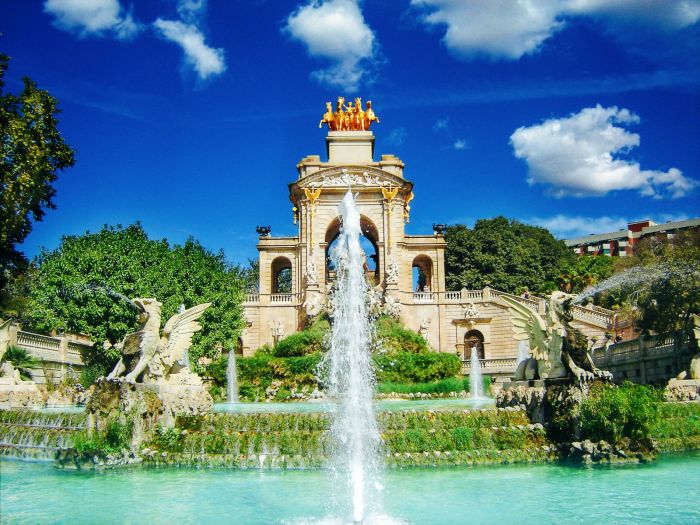
As you journey through Spain, you’ll find yourself immersed in a world of captivating history, vibrant culture, and breathtaking beauty. Whether you’re exploring the bustling streets of Madrid, savoring the flavors of Seville, or basking in the sun on the beaches of Mallorca, Spain will leave an unforgettable mark on your heart.
So, pack your bags, embrace the adventure, and get ready to experience the magic of Spain!
Answers to Common Questions
What is the best time to visit Spain?
The best time to visit Spain depends on your preferences. Spring (April-May) and autumn (September-October) offer pleasant weather and fewer crowds, while summer (June-August) is perfect for beach lovers.
How much does it cost to travel to Spain?
The cost of traveling to Spain varies depending on your travel style, accommodation choices, and activities. You can find budget-friendly options or indulge in luxury experiences.
Do I need a visa to travel to Spain?
Visa requirements depend on your nationality. Citizens of many countries can enter Spain without a visa for short-term stays, but it’s essential to check the latest regulations before your trip.

